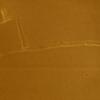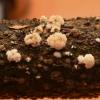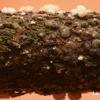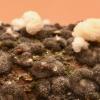
17-12-2025 18:35
 Michel Hairaud
Michel Hairaud
Bonjour à tous/Hi to everyone I am passing along

15-12-2025 15:48
 Danny Newman
Danny Newman
Melanospora cf. lagenaria on old, rotting, fallen

15-12-2025 15:54
 Johan Boonefaes
Johan Boonefaes
Unknown anamorph found on the ground in coastal sa

15-12-2025 21:11
 Hardware Tony
Hardware Tony
Small clavate hairs, negative croziers and IKI bb

15-12-2025 07:09
 Danny Newman
Danny Newman
indet. Rutstroemiaceae sp. on unk. fallen leavesMc

15-12-2025 07:05
 Danny Newman
Danny Newman
Pseudosclerococcum golindoi (det: Zotto)near Cosb

15-12-2025 11:49
 Danny Newman
Danny Newman
ITS sequences from the following two collections B

15-12-2025 12:34
 Danny Newman
Danny Newman
indet. Rhytismataceae on oak leafnear Purchase Roa
Unknown on Populus -> Pyxidiophora species
Riet van Oosten,
03-10-2025 13:44

Hello,
Found by Laurens van der Linde on Populus (25-09-2025).
We have no idea what this could be.
Greetings, Riet
David Malloch,
03-10-2025 14:21

Re : Unknown (maybe a basidiomycete?)on Populus
That is really fascinating!
It appears to be a mass of colourless perithecia. The spores resemble ascospores of a Pyxidiophora species. Is it growing over a decaying mushroom?
Martin Bemmann,
03-10-2025 16:37

Re : Unknown (maybe a basidiomycete?)on Populus
Hi David,
I would agree with a Laboulbeniaceae, but with a spectacular appearence!
But what would be the host?!
Regards
Martin
David Malloch,
03-10-2025 16:59

Re : Unknown (maybe a basidiomycete?)on Populus
The third picture shows something resembling an erumpent stroma with the parasite seated on top. Pyxidiophora is probably a very large genus with hosts in both Ascomycota and Basidiomycota. I have seen several (unnamed) species on decomposing brown algae. These can be grown in culture if they are provided with an appropriate host such as Paradendryphiella arenaria.
Riet van Oosten,
03-10-2025 19:00
David Malloch,
03-10-2025 19:30

Re : Unknown on Populus -> Pyxidiophora species
Hello Riet,
It looks to me like it is fruiting on the surface of another ascomycete, perhaps a valsoid pyrenomycete. I suspect it is an undescribed species of Pyxidiophora, but it would be very nice if you could confirm that with a DNA sequence. I am retired and no longer have the facilities to do that, but perhaps someone in the AscoFrance community can help. It is a wonderful fungus that begs for further study.
David
Riet van Oosten,
03-10-2025 19:41

Re : Unknown on Populus -> Pyxidiophora species
Hello David,
So nice that we now know more about this beautiful fungus, thanks again for your help!
Riet
Martin Bemmann,
05-10-2025 16:19

Re : Unknown on Populus -> Pyxidiophora species
Here is an example of such a fungus with another as host:
Mycorhynchus fusco-olivaceus G. Arnold (Pyxidiophora fusco-olivacea) on Inonotus
obliquus.
obliquus.
Could it be the host in Laurens' find is a Myxo?
Regards
Martin
Riet van Oosten,
05-10-2025 16:32

Re : Unknown on Populus -> Pyxidiophora species
Thank you very much for this information Martin!
David Malloch,
05-10-2025 18:33

Re : Unknown on Populus -> Pyxidiophora species
I am a little doubtful about myxomycetes as hosts for Pyxidiophora species. As far as I know they are known from both ascomycetous and basidiomycetous hosts, but not from zygomycetes or other "lower fungi:.I have found them on dung, rotting wood, mushrooms and on rotting seaweed wrack on ocean beaches. They form contact cells on the hyphae of their host, where they are able to penetrate and obtain nutrients. They spread by attaching to phoretic mites that carry them to a new substrate.
The picture here shows a hypha of Pyxidiophora sp. from seaweed growing from the left side of the picture and attaching on the right to a hypha of Paradendryphiella arenaria. The contact cells are the small round sucker-like structures.
Martin Bemmann,
05-10-2025 18:50

Re : Unknown on Populus -> Pyxidiophora species
This was a guess only by its appearance. I am not surprised by having Laboulbeniomycetes on insects as well as on fungi since both provide a chitinous substratum and proteins. How about myxos in this respect?
Do the mites play a further role in the spread of the seaweed-parasites, or do they use them just as vehicles?
Regards
Martin
David Malloch,
05-10-2025 19:14

Re : Unknown on Populus -> Pyxidiophora species
I am just not sure about myxos; I have never seen them with Pyxidiophora but I am not a big collector of that group. They certainly have fungal parasites from other ascomycetes, so why not Pyxidiophora?
I am not certain about what the mites on seaweed eat. Possibly nematodes or other mites, or maybe they are just fungivores. However, the ones Meredith Blackwell and I studied on dung were predaceous mites that moved rapidly around on the dung and inadventently acquired Pyxidiophora spores on their legs before they climbed on beetles for their transport to new dung. Once attached to the mites the spores began to develop more complex structures and to produce conidia. When the beetles arrived at a new deposit of dung the mites disembarked and the modified Pyxidiophora spores spread their conidia on new fungal hosts.
Martin Bemmann,
05-10-2025 19:27

Re : Unknown on Populus -> Pyxidiophora species
Whow, it is a chain of transport from the smallest to the biggest...
I just revisited Lundquist 1980 on Pyxidiophora and found this (p- 128):
" Rhynchonectria longispora" sensu Grove inhabits, i.a., myxomycete plasmodia, and two or three
species are supposed to grow in bark beetle galleries (see discussion underr Acariniola). The remaining species are coprophilous.
species are supposed to grow in bark beetle galleries (see discussion underr Acariniola). The remaining species are coprophilous.
So, not impossible....
Riet van Oosten,
15-10-2025 12:58
David Malloch,
15-10-2025 14:36

Re : Unknown on Populus -> Pyxidiophora species
Wonderful! I have never seen such a large fruiting of Pyxidiophora.

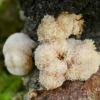
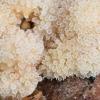
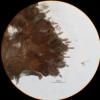
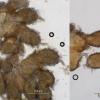
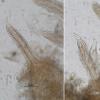
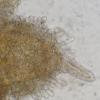
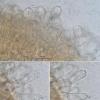
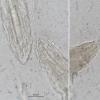
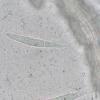
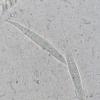
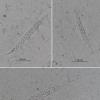

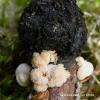
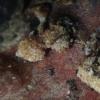
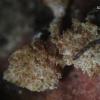
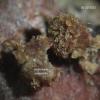
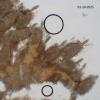
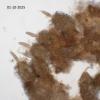
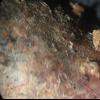
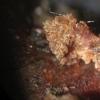
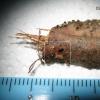
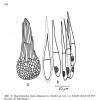
 Arnold-1971-Sphaeriales-0001.pdf
Arnold-1971-Sphaeriales-0001.pdf